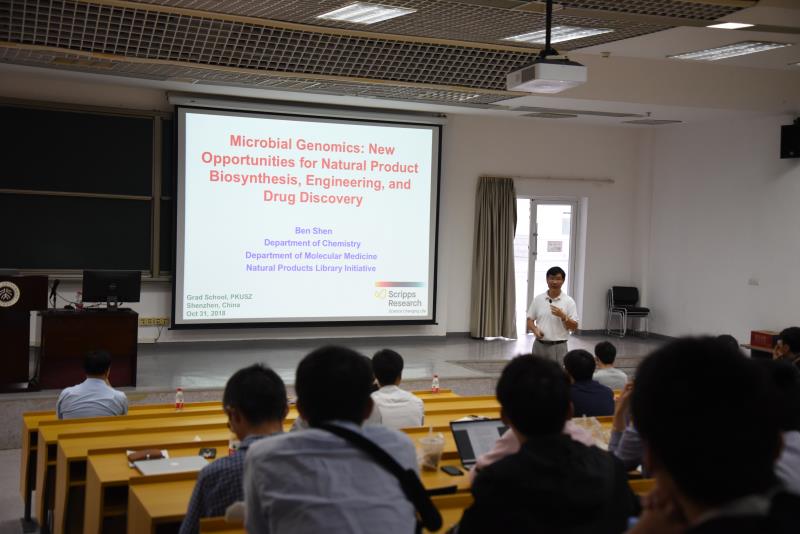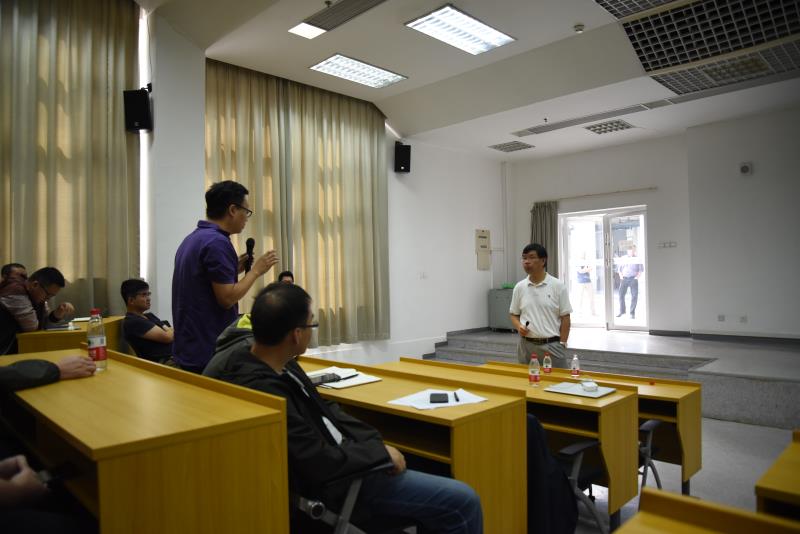Author:scbb
Time:2018-11-02 09:15:16
Hits:
On October 31, 2018, Prof. Ben Shen from The Scripps Research Institute visited our school and gave a wonderful lecture titled “Microbial Genomics: New Opportunities for Natural Product Biosynthesis, Engineering, and Drug Discovery”.Faculty members and students actively participated in the academic discussions and exchanged ideas.

Firstly, Prof. Ben Shen introduced Microbial Genomics, and then he focused on Genome mining which has allowed targeted discovery natural product scaffolds by exploring the vast biosynthesis repertoire found in Nature, presenting two selected examples from their current studies. One is targeting diterpene synthases for diterpenoids, and the other is targeting the PKSE cassetters for enediynes. As PTM & PTN featured distinct ent-kaurene & ent-atiserene synthase, they can serve as models for diterpenoid biosynthesis. More importantly, they found S.platensis MA7327 is a PTM-PTN dual producer, making ent-Atiserene synthase a new pathway for diterpenoid biosynth. Also, Prof. Ben Shen introduced Enediyne biosynthesis as Enediyne has potential as anticancer drugs. Lastly, Microbial genomics gives vast opportunities for NP discovery, taking the dicovery of anti-Cryptosporidium drug leads and macrofilaricidal leads for examples. Prof. Ben Shen thinks Genomics-based approaches for NP discovery and structural diversity are promsing but its potential is yet to be fully realized.
After the speech, professors and students of our school discussed with Prof. Ben Shen actively.

Brief introduction of speaker:
Professor Ben Shen got his B.S. fromHangzhou University in 1982. He continued his Ph.D training at Oregon State University at Corvallis. He has had many Academic positions and been awarded many honors.
The research interests of professor Ben Shen includes: (i) cloning and characterization of novel natural product biosynthetic gene clusters and machinery; (ii) discovery and elucidation of novel enzymes, biochemistry, and mechanism of catalysis; (iii) engineering of natural product structure diversity by combinatorial biosynthesis methods for drug discovery and development; (iv) expression of natural product biosynthetic gene clusters in heterologous hosts for natural product production and engineering; and (v) genome mining of natural products from under-explored microorganisms and construction of a natural product library to screen emerging targets for anticancer and antiinfective drug discovery and to provide small molecule probes to interrogate biology.Untill now, he has 258 publications, 11 published patents, and >285 invited lectures.